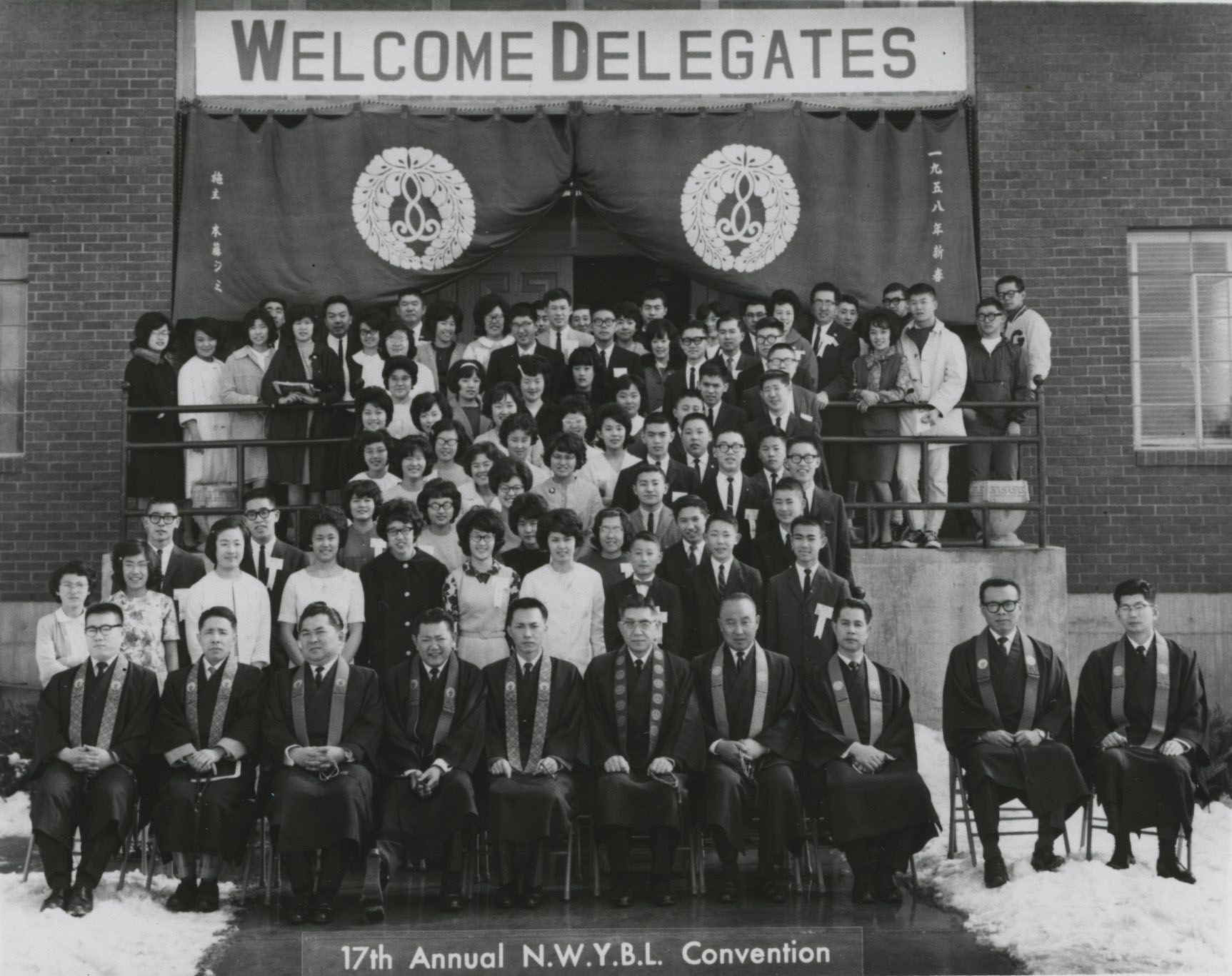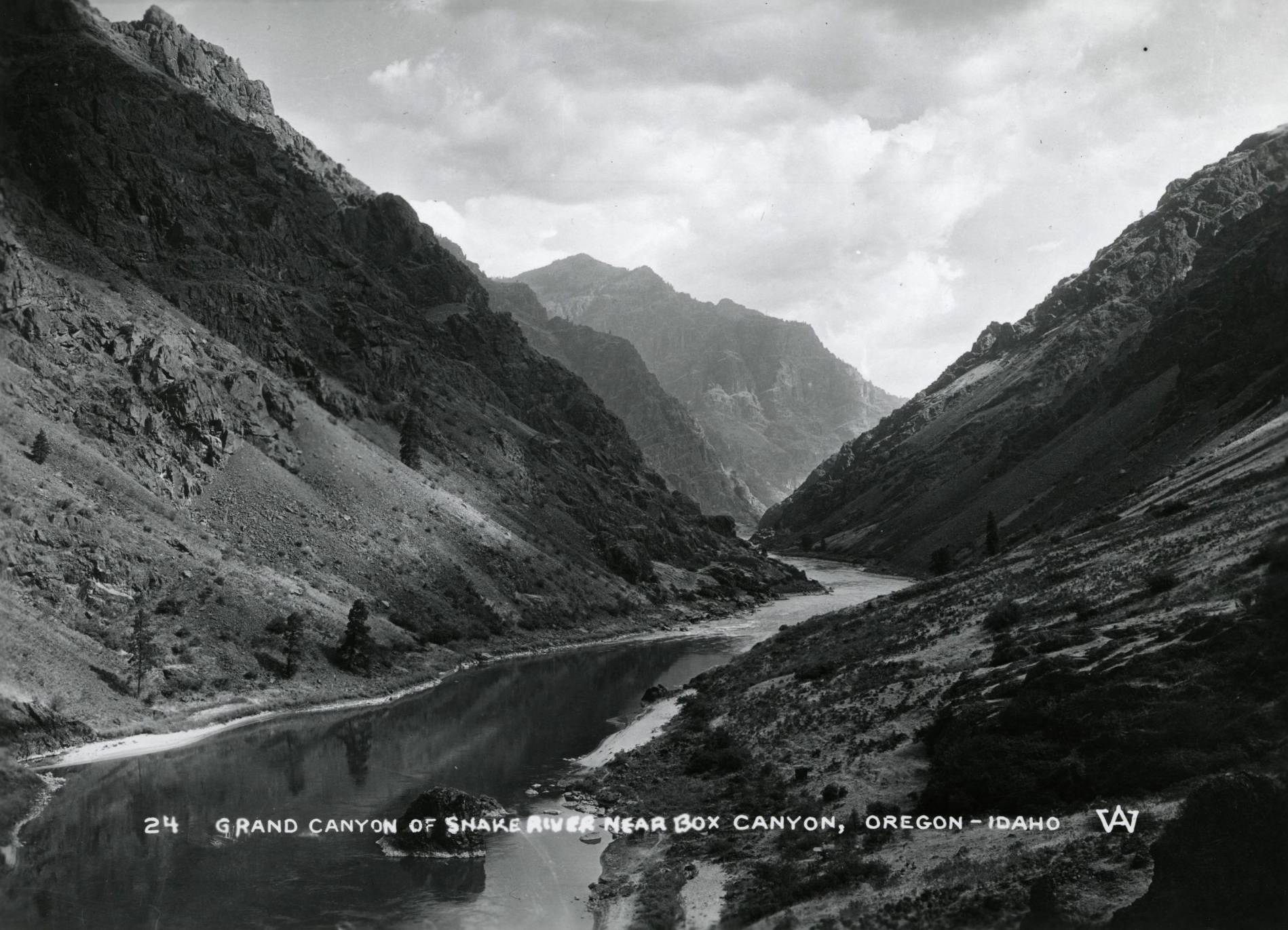Ontario, the largest city in Malheur County, is on the Snake River near the Oregon state line. As the first city that people encounter when crossing into Oregon from Idaho on Interstate 84, Ontario has adopted the slogan "Where Oregon Begins."
Although Oregon Trail pioneers crossed the Snake River about fifteen miles south of Ontario (near present-day Nyssa), the town was not founded until 1883, when the area was still part of Baker County. In 1883, four residents of Baker City—William Morfitt, Daniel Smith, James W. Virtue, and Mary Richardson—claimed adjoining sections of desert land with the intention of platting a town. Part of Virtue's claim was deeded to the Idaho-Oregon Land Improvement Company, headed by Abraham Caldwell, who had the authority to establish a train station for the Oregon Short Line Railway, a subsidiary of the Union Pacific Railroad that eventually ran from Granger, Wyoming, to Portland. Those five individuals developed the town site of Ontario, which Virtue named in honor of his home province of Ontario, Canada.
In 1884, William Morfitt built the first frame building in Ontario and drew up a contract with the Nevada Ditch Company to supply the town with irrigated water. A post office was also established that year, with Morfitt as the first postmaster. Several stores opened in anticipation of the arrival of the Oregon Short Line, which was connected to Ontario in the winter of 1884-1885. Nearly all of the stock and wool shipments from eastern Oregon producers were shipped through Ontario, and its stockyard became the largest on the Short Line. By June 1899, the average daily value of shipments of cattle sent out of Ontario was $25,000, a strikingly high value (the equivalent of approximately $746,000 in 2016).
Malheur County was carved out of southern Baker County in 1887, and a fight ensued over where to locate the new county seat. Vale won over Ontario by popular vote in 1888. The question was presented to the electorate in multiple elections until 1913, when Ontario finally conceded defeat.
The Oregon legislature incorporated Ontario on February 11, 1899, and the town continued to grow and prosper throughout the twentieth century as a shipping and supply point for eastern Oregon. The town had 200 residents in 1890, a number that has increased in almost every census since then. The population in the 2020 census was 11,645.
In 1903, the town launched a salmon hatchery on Morton Island in the Snake River, which at the time still saw significant runs of salmon. As eastern Oregon developed, however, and a series of dams was constructed to supply water for agriculture, the hatchery failed after salmon were blocked from reaching it.
Ontario built a hospital in 1912, a city hall in 1913, fire and police department buildings, and a series of city parks during the interwar period, as well as a golf course in 1938. The town's first newspaper was the Atlas, followed by the Malheur Gazette and the Argus, which has been Ontario’s daily newspaper since 1900.
During World War II, Ontario came to national attention for welcoming Japanese Americans to settle in the region. The town's mayor, Elmo Smith (who would become the twenty-seventh governor of Oregon), said that since the government had determined that Japanese and Japanese Americans could not live on the coast, then “it appears downright cowardly to take any other stand than to put out the call, ‘Send them along; we'll cooperate to the fullest possible extent in taking care of them.’” Subsequently, Ontario's population of 134 Japanese Americans ballooned to a thousand during the war years, most of whom found jobs as agricultural workers during the wartime labor shortage. (Some incarcerated Japanese Americans also found work in Ontario when they were granted leave from Minidoka, the concentration camp in Idaho, to help the agricultural harvest in areas outside of the demilitarized zone.) A Japanese American Citizens League remains active in Ontario today, and the town has a sister city, Ōsakasayama, in Japan.
Agriculture continues to dominate Ontario’s industry, particularly russet potatoes, sugar beets, and onions. One of the town's primary employers is the Heinz Frozen Food Company, which annually produces over 600 million pounds of potato products and employs approximately a thousand people. Other major employers are the Snake River Correctional Institute, which opened in 1991 and holds 3,000 beds (the largest in Oregon), and Treasure Valley Community College, which opened in 1962 and serves approximately 7,500 students each year. The Four Rivers Cultural Center, a 10,000-square-foot museum and community space, celebrates the diverse settlement patterns in the Ontario region, including exhibits on Northern Paiutes, Basques, Japanese, Hispanics, and EuroAmericans.
Notable former residents of Ontario include Governor Elmo Smith; Charles C. Gossett, an Idaho senator (1945-1946) and governor (1945); Randall B. Kester, an associate justice on the Oregon Supreme Court (1957-1958); and novelist and poet Phyllis McGinley.
-
![]()
Oregon St., Ontario, 1910.
Courtesy Oregon Hist. Soc. Research Lib., 003371
-
![]()
Oregon Short Line depot, Ontario, c.1910.
Courtesy Oregon Hist. Soc. Research Lib., 005867
-
![]()
First Baptist Church, Ontario, Oregon.
Courtesy Oregon Hist. Soc. Research Lib., 010226
-
![]()
Carter House (left) and Fiser Hotel (Right), downtown Ontario, c.1910.
Courtesy Oregon Hist. Soc. Research Lib., 005868
-
![Teachers Henrietta Payne and Nathaniel Conklin]()
Class portrait of Ontario's public school, c.1905.
Teachers Henrietta Payne and Nathaniel Conklin Courtesy Oregon Hist. Soc. Research Lib., 003638
-
![]()
Hotel Ontario.
Courtesy Oregon Hist. Soc. Research Lib., 003362
-
![]()
The Moore Hotel, the Majestic Theater, and the Golden Rule Store, Main St., Ontario, 1931.
Courtesy Oregon Hist. Soc. Research Lib., 005869
-
![]()
Ontario's public library, 1931.
Courtesy Oregon Hist. Soc. Research Lib., 006839
-
![]()
Main St., Ontario, 1939.
Courtesy Oregon Hist. Soc. Research Lib., 005870
-
![]()
Idaho-Oregon Judo Club, Japanese Community Hall, Ontario, 1951.
Courtesy Oregon Hist. Soc. Research Lib., 008058
-
![]()
Women processing corn for freezing, Ontario, 1952.
Courtesy Oregon Hist. Soc. Research Lib., 005872
-
![]()
Ontario Buddhist Sunday School, 1956.
Courtesy Oregon Hist. Soc. Research Lib., 44624
-
![]()
Seventeenth Annual Northwest Youth Buddhist League Convention, 1958, Ontario, Oregon.
Courtesy Oregon Hist. Soc. Research Lib., 44620
Related Entries
-
![Basques]()
Basques
The first Basques to Oregon arrived in the late 1880s. These Euskalduna…
-
![Four Rivers Cultural Center and Museum]()
Four Rivers Cultural Center and Museum
The Four Rivers Cultural Center in Ontario is a nonprofit organization …
-
![James W. Virtue (1837-1903)]()
James W. Virtue (1837-1903)
As early as 1871, James William Virtue—one-time sheriff of Baker County…
-
![Japanese Americans in Oregon]()
Japanese Americans in Oregon
Immigrants from the West Resting in the shade of the Gresham Pioneer C…
-
![Japanese American Wartime Incarceration in Oregon]()
Japanese American Wartime Incarceration in Oregon
Masuo Yasui, together with many members of Hood River’s Japanese commun…
-
![Latinos in Oregon]()
Latinos in Oregon
The arrival of Latinos in Oregon began with Spanish explorations in the…
-
![Oregon Plan]()
Oregon Plan
The Oregon Plan, implemented in May 1942, led to the organization of th…
-
![Phyllis McGinley (1905-1978)]()
Phyllis McGinley (1905-1978)
Phyllis McGinley, born in Ontario, Oregon, in 1905, was an award-winnin…
-
![Snake River]()
Snake River
The Snake River has its headwaters at an elevation of 8,200 feet on the…
Related Historical Records
Map This on the Oregon History WayFinder
The Oregon History Wayfinder is an interactive map that identifies significant places, people, and events in Oregon history.
Further Reading
McArthur, Lewis. Oregon Geographic Names, 7th edition. Portland: Oregon Historical Society Press, 2003.
An Illustrated History of Baker, Grant, Malheur and Harney Countes, with a Brief Outline of the Early History of the State of Oregon. Western Historical Publishing Company, 1902.






















